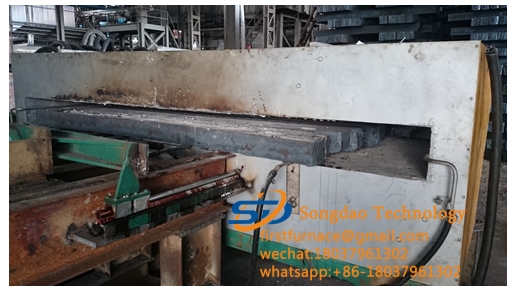- 24
- Dec
Defects of traditional steel rolling process
Defects of traditional steel rolling process
The traditional steel rolling process is that the steel billets are stacked and cooled, transported to the rolling mill, and then heated in a heating furnace to be rolled into steel. This process has two defects:
1. After the billet is drawn from the steel-making continuous caster, the temperature on the cooling bed is 700-900°C, and the latent heat of the billet is not effectively utilized.
2. After the continuous casting billet is heated by the heating furnace, the surface of the billet will lose about 1.5% due to oxidation.
Energy-saving benefit analysis:
1. The coal consumption of the original heating furnace heating billet process is 80 kg/ton of steel (calorific value 6400 kcal/kg), which is equivalent to 72 kg of standard coal; after the technological transformation, the process energy consumption is 38 kWh per ton of steel, which is equivalent to 13.3 kg Standard coal
2. Based on the estimated annual production of steel products of 600,000 tons, the annual savings of standard coal is: (72-13.3) ÷ 1000 × 600,000 tons = 35,220 tons of standard coal.
3. Energy saving principle:
After the billet is drawn from the continuous casting machine, the surface has a temperature of 750-850, and the internal temperature is even as high as 950-1000°C. One of the basic principles of induction heating is the skin effect, which is that heat energy is gradually transferred inward from the surface heating. Above, one-third of the inside of the billet does not need to be heated. According to different billet cross-sectional dimensions, select different frequencies to get better heating efficiency.
4. Energy-saving points:
a) The high energy utilization rate of induction heating can be as high as 65 to 75%, while the traditional regenerative heating furnace is only 25 to 30%.
b) The surface oxidation of the induction heating billet is only 0.5%, while the regenerative furnace can reach 1.5-2%.

